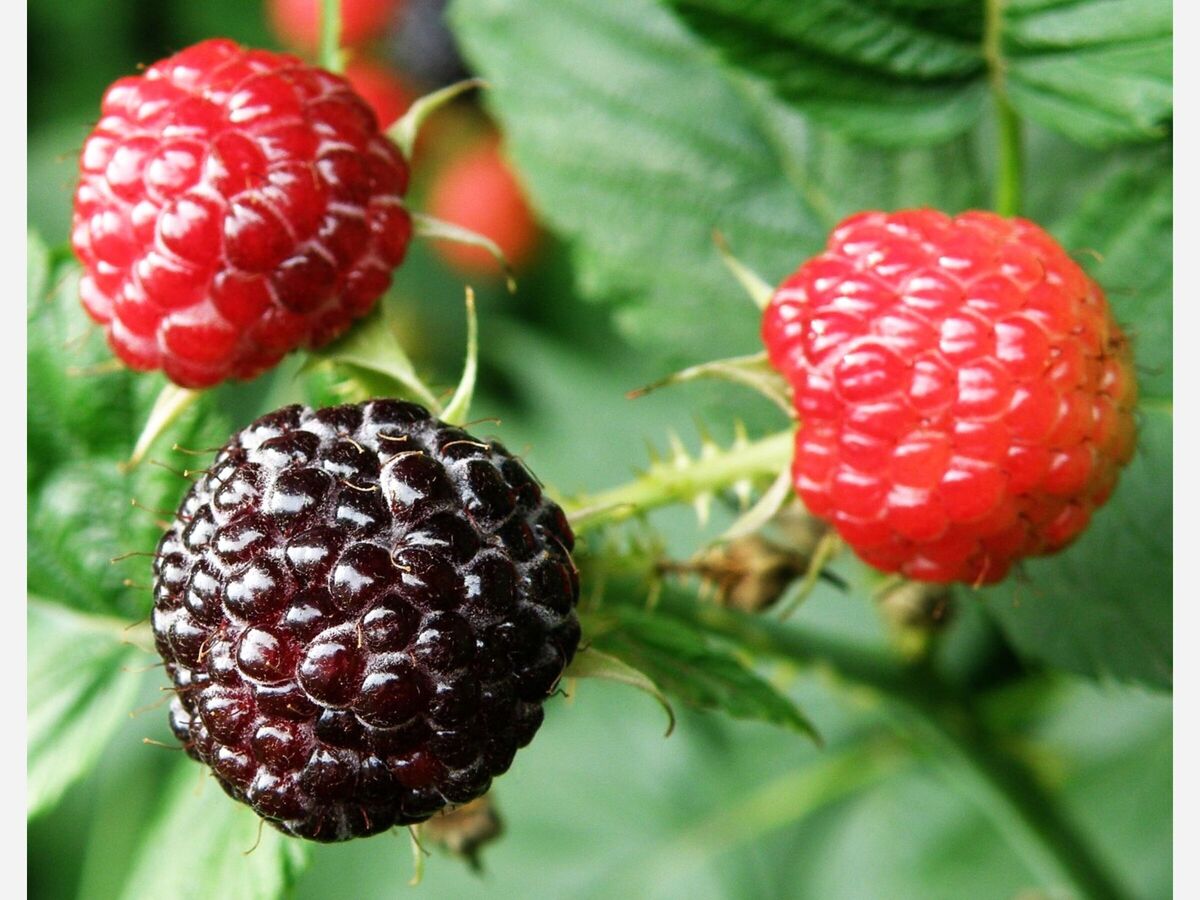Image


The wild blackberry is a tasty, nutritious, spreading plant that's hard to eradicate. And it has thorns.
However, the wild black raspberry is much more common in our area. And it's even sweeter and more nutritious. Unlike a blackberry, the white cone (or receptacle) of a raspberry is left behind on the stem after you pick it. So, unlike blackberries and mulberries, a black raspberry is hollow. It's also shorter and rounder, rather than oblong. When black and ripe, the soft fruits look cloudy, with tiny hairs. But it also has thorns.
If you discuss the subject among the agriculturally knowledgeable in America, you may want to note that though the fruits are called blackberries, the plants are called brambles. The English call the fruits "bramble" too and have had an ambivalent relationship with the plant ever since their pre-Roman ancestors kept catching their animal-skin clothing on the thorns while gathering the fruit. In England today, some people make bramble jam while others eradicate brambles with triclopyr.
Wild blackberries get little respect among the agricultural. When I asked some Winnebago County Master Gardeners in Rockford about wild blackberry cultivation, they responded, "Can't you just cut them down?" An Illinois extension article says "Make the most of berry season" but it makes nothing of wild berries, gushing about "those first few farmers markets near the end of May and early June where berries are likely available." The University of Illinois Extension simply advises blackberry gardeners, "Look for the variety 'Illini Hardy.' Destroy any wild brambles, as they harbor pests and diseases that attacks blackberry." As if wild brambles are not blackberries too.
Pruning berries makes them more productive, and that seems to go for wild blackberries as well. The Illinois Extension advises pruning in winter. You can eat either wild blackberries or black raspberries confidently (if carefully - you might want gloves and long sleeves before making an excursion deep into a bramble) because there are no poisonous berries that look like them.